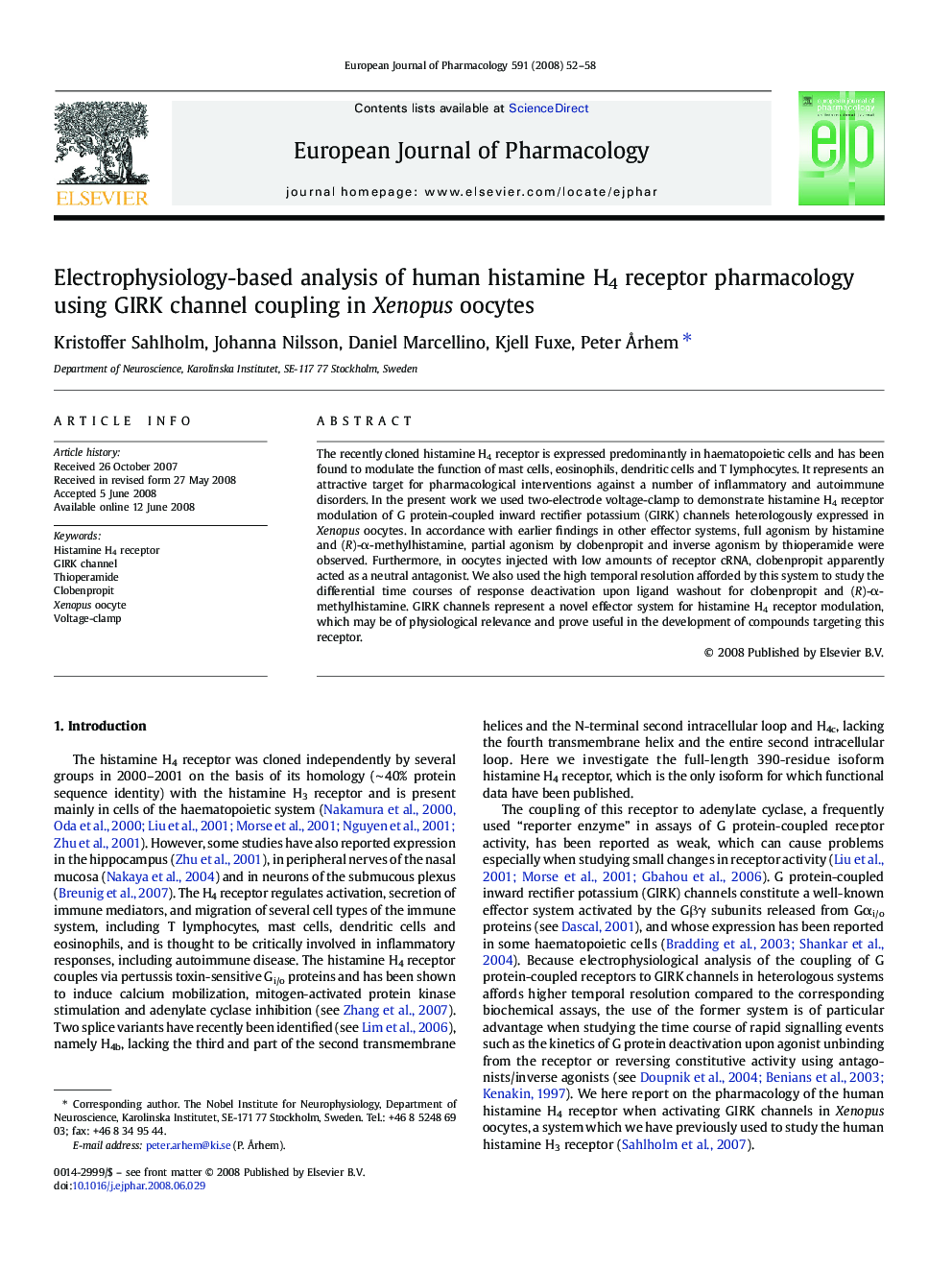| Article ID | Journal | Published Year | Pages | File Type |
|---|---|---|---|---|
| 2535013 | European Journal of Pharmacology | 2008 | 7 Pages |
The recently cloned histamine H4 receptor is expressed predominantly in haematopoietic cells and has been found to modulate the function of mast cells, eosinophils, dendritic cells and T lymphocytes. It represents an attractive target for pharmacological interventions against a number of inflammatory and autoimmune disorders. In the present work we used two-electrode voltage-clamp to demonstrate histamine H4 receptor modulation of G protein-coupled inward rectifier potassium (GIRK) channels heterologously expressed in Xenopus oocytes. In accordance with earlier findings in other effector systems, full agonism by histamine and (R)-α-methylhistamine, partial agonism by clobenpropit and inverse agonism by thioperamide were observed. Furthermore, in oocytes injected with low amounts of receptor cRNA, clobenpropit apparently acted as a neutral antagonist. We also used the high temporal resolution afforded by this system to study the differential time courses of response deactivation upon ligand washout for clobenpropit and (R)-α-methylhistamine. GIRK channels represent a novel effector system for histamine H4 receptor modulation, which may be of physiological relevance and prove useful in the development of compounds targeting this receptor.
